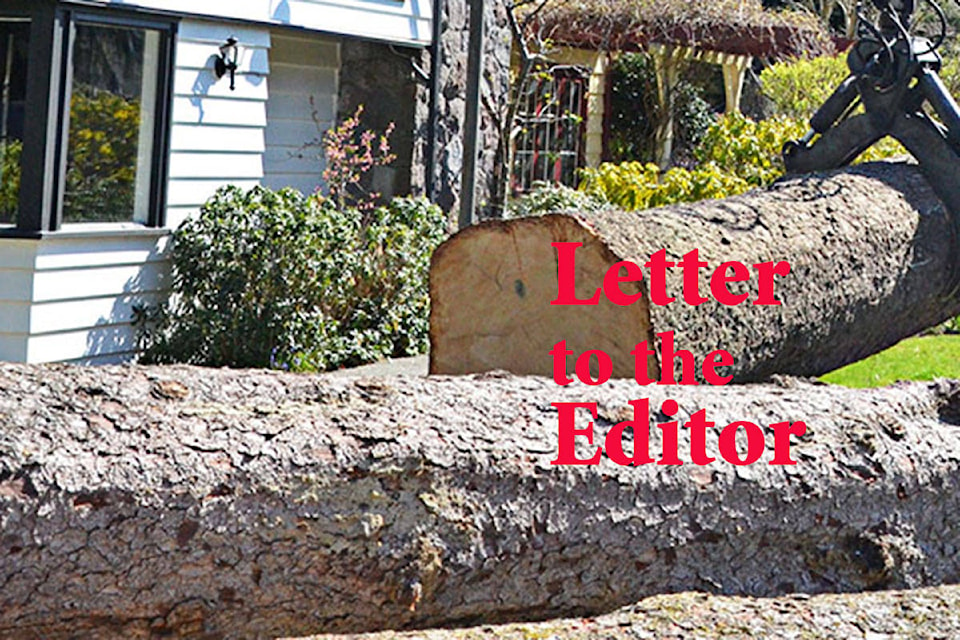Dear Editor,
Recently there has been a number of newspaper articles and opinion pieces defending property owner rights around the topic of tree conservation and a Tree/Canopy preservation Bylaw for the Township of Langley.
At the same time, there have been multi-media reports that the Northern Hemisphere’s average temperature, which of course includes Canada and Langley, is increasing at twice the rate as the rest of the world, due to climate change.
While there has been reference to the many benefits that trees provide, one in particular has received cursory discussion, and that is the capacity of trees to sequester atmospheric carbon dioxide while they are growing, converting it into a woody material. This capacity is not given much credit, most likely because trees, when they die, by natural or artificial causes, decay and release that carbon back into the atmosphere.
But there is a way of interrupting that carbon cycle, by subjecting the woody material to a process called pyrolysis, heating the wood in a low oxygen environment.
Up to 40 per cent of that carbon can be conserved in the form of charcoal, which, when encapsulated in the ground, breaks down extremely slowly, sequestering that carbon for centuries, even millennia. This charcoal, created at a specific temperature, also serves as an excellent soil amendment in exhausted or rocky, fast-draining agricultural soils, retaining water much like a sponge, and also holding unto mineral nutrients, reducing loss due to leaching.
In addition to the charcoal, known as biochar when used in an agricultural setting, the process creates heat that can be used for other purposes, as well as liquid byproducts that have a multitude of uses.
So while many reasons are given as to why trees should be removed, that they are too big for the site, that they create extra work with their annoying habit of dropping their leaves or needles, that they shouldn’t live forever, trees have more value than are given credit.
While cutting down a backyard tree for the installation of a swingset, likely to have play value for a half dozen years of so, that tree can continue to provide its benefits for decades.
Additionally, there are options: community playgrounds.
Once a tree is cut down, it is gone, and the long term benefits with it.
As community members, we need to understand and accept that whether in our backyards or in the public domain, trees serve a common community good, and our role should be that of stewards, not owners.
When the trees do have to be removed, whether because they have become a hazard or interfere with soberly thought-out development, they should not be simply chipped and used for landfill where they decay and return the hard-earned sequestered carbon dioxide back into the atmosphere.
Regional consideration needs to be given to develop woody material processing systems, creating charcoal/biochar, so as to serve a longer term purpose in mitigating the impact of climate change, whatever one’s belief of its cause, because we all know that atmospheric carbon dioxide is increasing.
This is not an unrealistic idea, as the City of Surrey is already converting its garbage into fuel used in its garbage collection fleet.
Perhaps the return of a smoky two-week period for the third summer in a row, due to upcountry wildfires, will impress upon us the need to reduce atmospheric carbon dioxide.
Tree preservation, care, and expansion of the Township’s tree canopy is one of those low-hanging-fruit actions that everyone who has access to a tree can use to lower their carbon footprint.
John Evanochko, Murrayville
READ ALSO: Tree bylaw threat danger to trees
